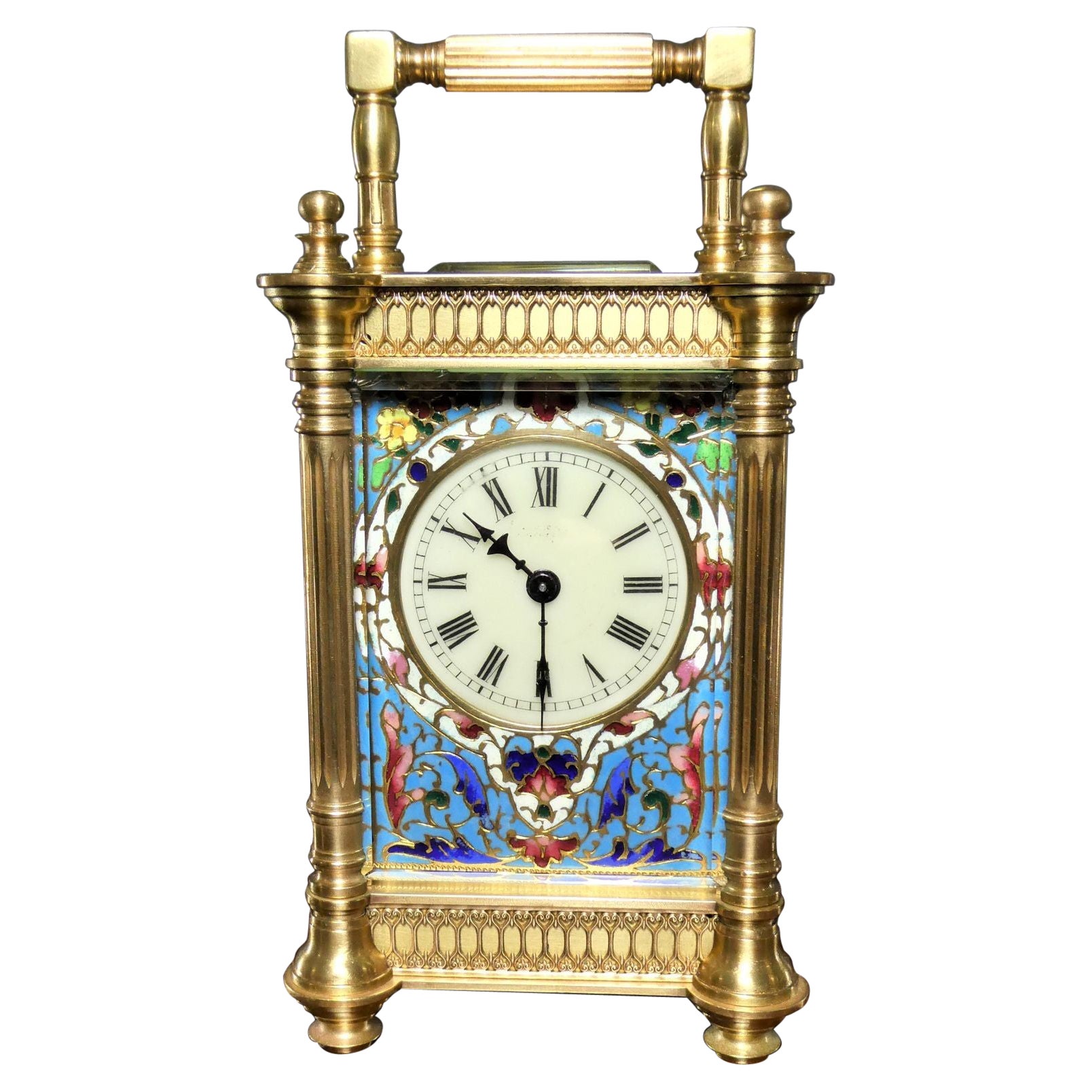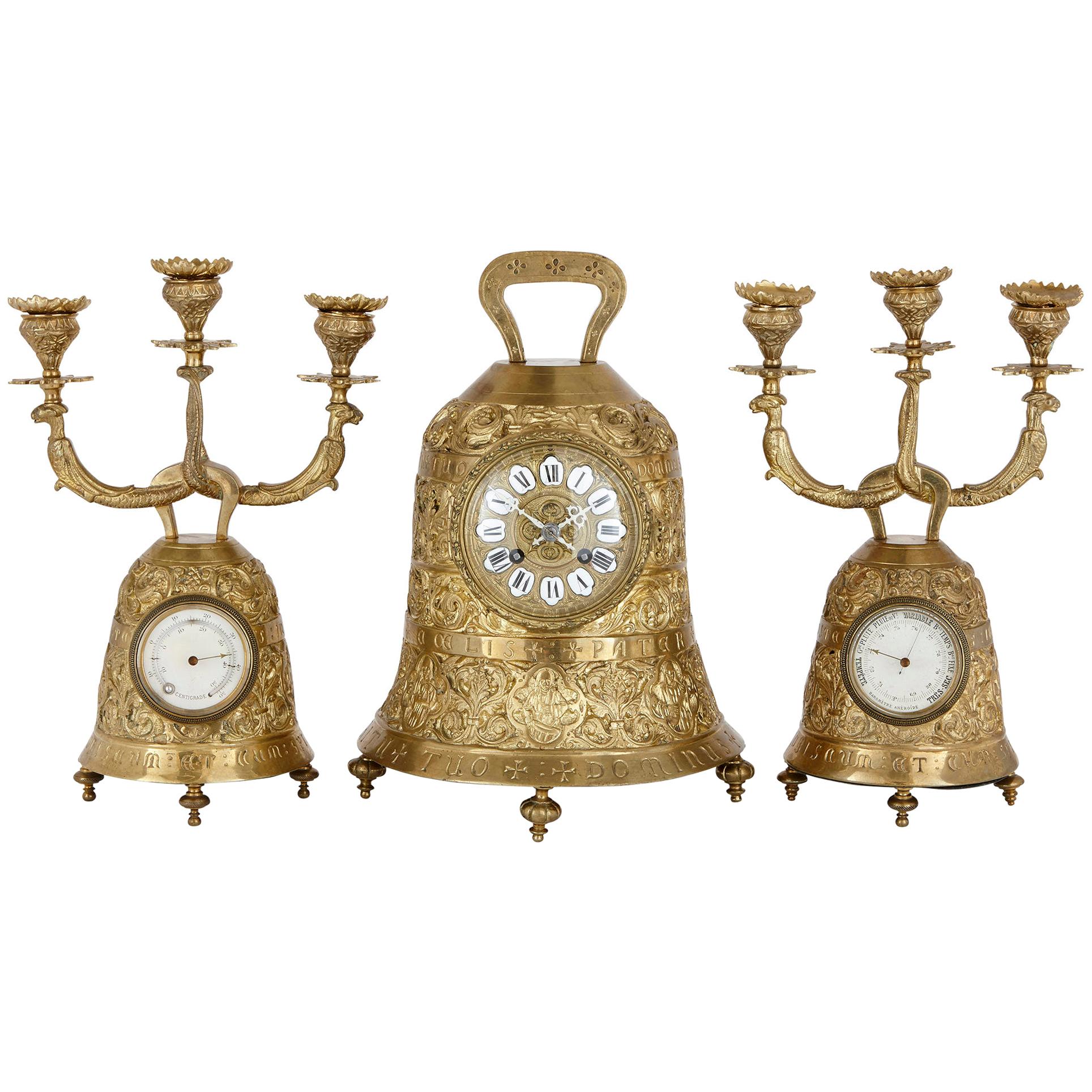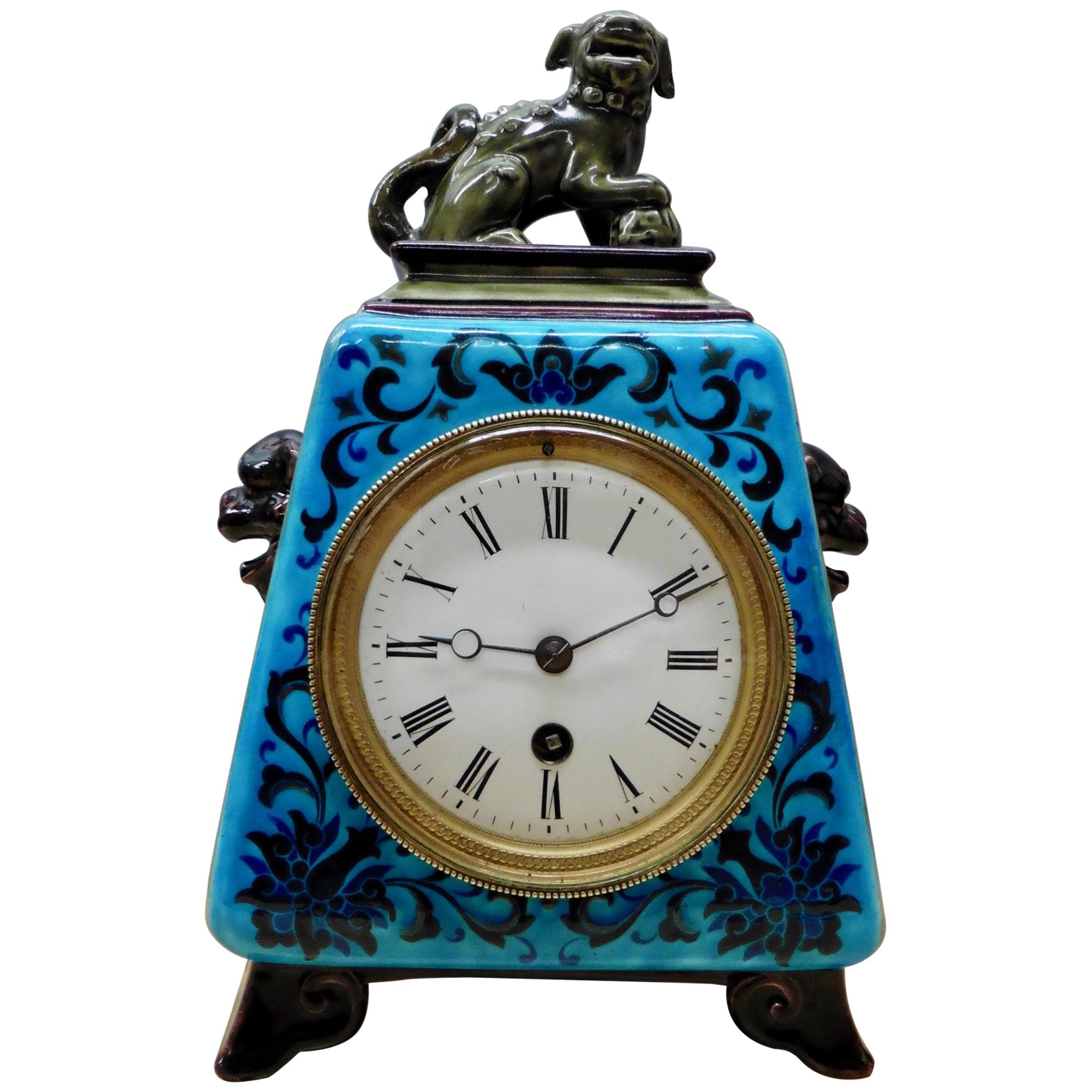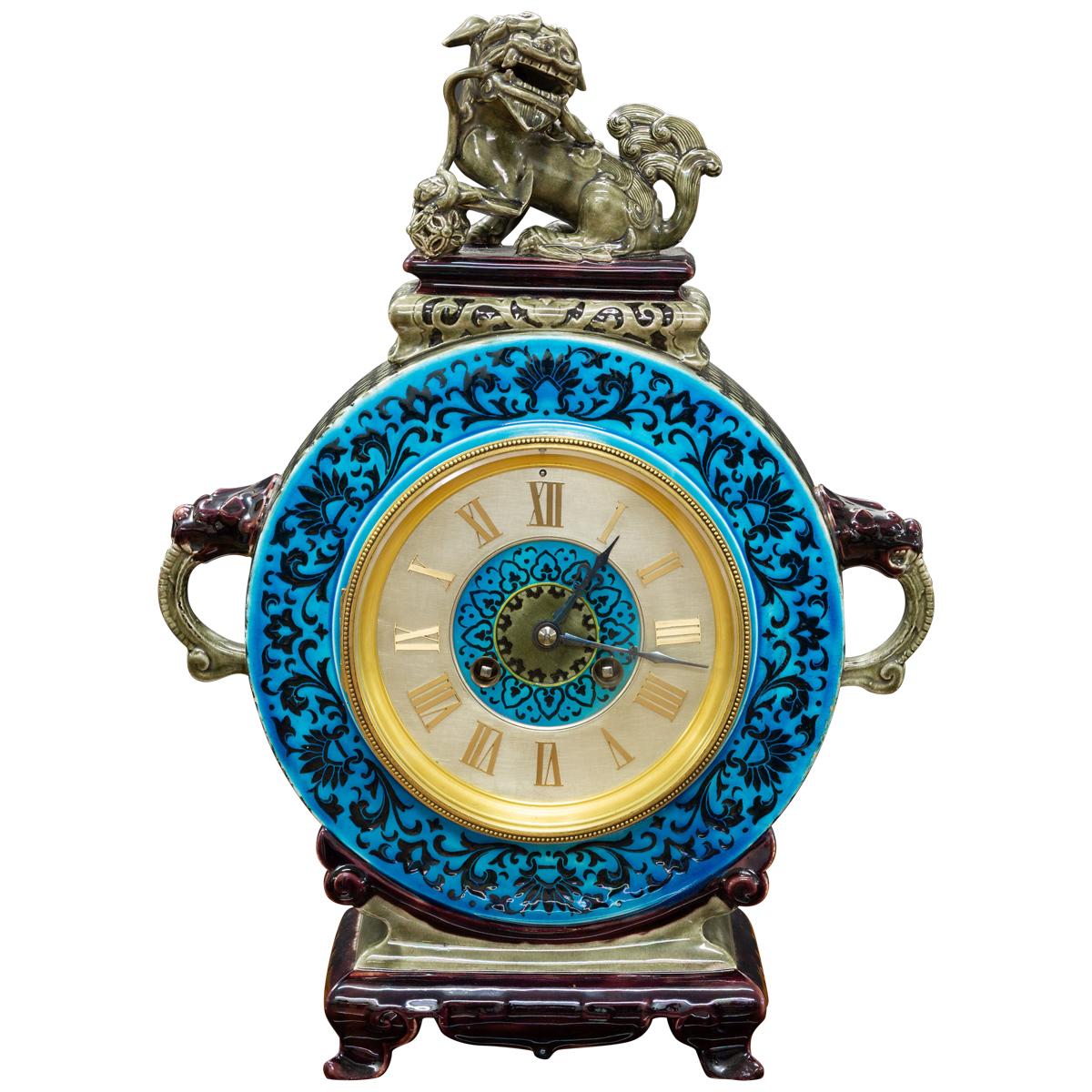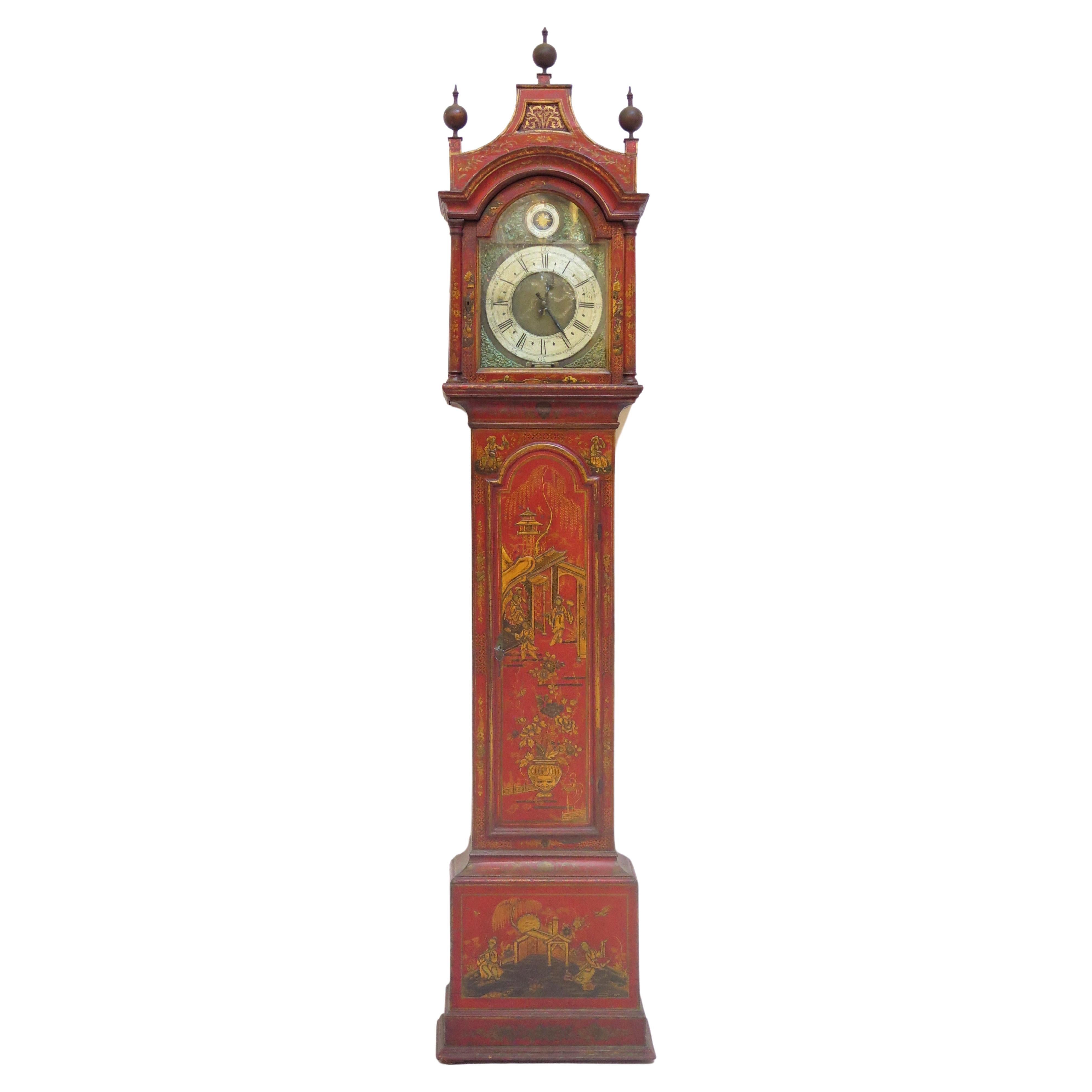Items Similar to Egg-shaped clock with enamel decorations.
Video Loading
Want more images or videos?
Request additional images or videos from the seller
1 of 18
Egg-shaped clock with enamel decorations.
About the Item
Egg-shaped center clock in guilloche enamel, white onyx base.
Period: first quarter of the 20th century / last quarter of the 19th century
Balance wheel movement and remontoire winding.
"cercle tournant" (rotating circle) mechanism.
Disc dial with Roman numerals
In box
Details:
The Polish
The design of the enamel, with those intersecting horizontal knurls, is typical of the workmanship of the early twentieth century.
The medallions
Top of the watch where they are
present three of the seven medallions with
polychrome depictions of ladies and cherubs.
The punches
Presence of punches on the base and in the
bottom of the plate with the numbers
Romans.
Clock egg punches.
Egg clock internal mechanism.
Egg clock internal mechanism.
Clock egg punches.
SWISS dial watch.
Authenticity
There are various elements that allow us to ascertain the authenticity of this watch:
first of all the presence of punches both on the base and around the metal body present under the Roman numerals.
The typical knurled workmanship in vogue in the early twentieth century.
The silver dial marked SWISS.
And finally its exhibition at Modenantiquaria following examination by the expert commission.
Materials: silver metal dial, rest of the surface covered in metal
from guilloché enamel, marble base
Watch Size:
h: 12.5 cm; W: 5.5cm
h: 4.92 inches; I: 2.16 inches
Box dimensions:
closed: h: 16 cm; width: 11.5 cm
h: 6.29 inches; width: 4.52 inches
open: h: 23.5 cm; width: 21.5 cm
h: 9.25 inches; width: 8.46 inches
*Please keep in mind that this work has not yet obtained the certificate of free export from Italy from the Superintendence of Cultural Heritage. This document certifies that the work is not part of the Italian cultural heritage. Normally the times for issuing certificates are 40 days from the date of the appointment: The new legislation in force from 2021 provides for shorter times at the discretion of the expert commission for declared amounts of less than €13,500. About 15 days. All costs of this operation are included.
- Dimensions:Height: 4.93 in (12.5 cm)Width: 2.17 in (5.5 cm)Depth: 2.17 in (5.5 cm)
- Style:Belle Époque (Of the Period)
- Materials and Techniques:
- Place of Origin:
- Period:
- Date of Manufacture:1910
- Condition:1200012.
- Seller Location:Vicenza, IT
- Reference Number:1stDibs: LU9729238860902
About the Seller
New to 1stDibs
Joined in the past six months.
No Reviews Yet
Vetted Seller
These experienced sellers undergo a comprehensive evaluation by our team of in-house experts.
1stDibs seller since 2024
- ShippingRetrieving quote...Ships From: Altavilla Vicentina, Italy
- Return PolicyA return for this item may be initiated within 14 days of delivery.
More From This SellerView All
- Amphora-shaped lamp in alabasterLocated in Vicenza, ITRefined table lamp in neoclassical style and in the shape of an amphora. Made from beautifully veined alabaster. It is lit with a lamp from inside, enhancing the white and brown vein...Category
Vintage 1920s European Art Deco Table Lamps
MaterialsAlabaster
- Venetian dresser shaped on the front and sides, 18th centuryLocated in Vicenza, ITVenetian chest of drawers with a contoured shape both on the front and on the sides, veneered in walnut and walnut root on both the front and on the sides and threaded in maple wood....Category
Antique Mid-18th Century Italian Louis XV Commodes and Chests of Drawers
MaterialsWalnut
- Eighteenth-century Venetian mirror in lacquered wood and with mother-of-pearl inLocated in Vicenza, ITExtraordinary venetian mirror in carved, lacquered and gilded wood. Slightly rounded band with foliate decorations in polychrome lacquer and mother-of-pearl inlays, carved and foliat...Category
Antique Early 18th Century Italian Louis XIV Wall Mirrors
MaterialsMother-of-Pearl, Giltwood
- Italian Louis XVI center table in inlaid woodLocated in Vicenza, ITExtraordinary wooden game table finely inlaid on the top, on the front, on the back and along all four truncated pyramidal legs. The top, also finely inlaid, opens concealing an int...Category
Antique Late 18th Century Italian Neoclassical Game Tables
MaterialsWood
- Magot, original 19th century porcelain BuddhaLocated in Vicenza, ITMagot of exceptional size with tilting head, tongue and hands. Material made entirely of porcelain, with the exception of the "biscuit" hands. What are magots? The word magot comes from the French: barbary ape. They are male or female figures with oriental features. Usually the material used for the representation was painted or decorated porcelain. The subject depicted, in a good-natured and pleasant way, is Pu-Tai. The Chinese god of happiness and abundance. It is said that they brought good luck because, thanks to their head, tongue and jointed hands, they were able to warn earthquakes. They arrived in Europe between the end of the seventeenth century and the beginning of the eighteenth century thanks to the first connections between European merchants (Venetian in particular) and Chinese. In the following decades, they became a status symbol to be displayed in aristocratic homes. They found fertile ground in Europe thanks to the fashion for the exotic that developed in the Old Continent during the first decades of the eighteenth century. This fashion can be found in various objects of the time, not only in the Magot, see the toilet objects and lacquered furnishings decorated with the famous chinoiseries. In a few years, thanks to the increased demand, our factories also began working to satisfy this new form of collecting. From the German ones: Meissen, Dresden, Rudolstadt; to the French ones: Saint Claude Samson and Chantilly, to the Italian ones. True masterpieces were created throughout Northern Italy. The Piedmontese ones, made of papier-mâché, were then unusual. Authenticity: Completely intact to the naked eye and the infrared lamp...Category
Antique Late 19th Century Italian Porcelain
MaterialsPorcelain
- Pair of oil paintings on canvas. E. Zampighi (Modena, 1859 - 1944)By Eugenio ZampighiLocated in Vicenza, ITBeautiful pair of oil paintings on canvas. Works by the renowned artist Eugenio Edoardo Zampighi. Truly rare paintings to find on the market due to their quality, number of characters, and paired execution. The paintings depict idyllic representations of an Italian family from the second half of the nineteenth century. Hence the titles of the paintings: "Center of Attention" "Admiring the Child" Period: Second half of the 19th century Origin: Modena, Italy Technique: Oil on canvas. Style: Verismo Details: Refinement: Zampighi's skill lies in depicting the figures as if a camera had simply captured a candid family scene. Golden Frames: Both paintings are enclosed within stunning golden frames. Ready to be hung. Recurring Elements: The white bowl, like the cat, the vinegar barrel, the water pitcher, and the lit fireplace are recurring elements in almost all of Zampighi's paintings. Authenticity: This pair of paintings are original works by the painter E. Zampighi (Modena, 1859 - 1944). Their analysis using infrared lamp...Category
Antique Late 19th Century Italian Paintings
MaterialsCanvas
You May Also Like
- French Carraige Clock with Champleve DecorationLocated in Norwich, GBFrench brass cased carriage clock with bevelled glass, fluted pillars and decorative fretwork to all three sides and to the back of the case, surmounted ...Category
Antique 1890s French Carriage Clocks and Travel Clocks
MaterialsBrass
- Edwardian Mantel Clock with Chinoiserie DecorationLocated in Norwich, GBEdwardian mantel clock in a break arch case with raised chinoiserie decoration on a red ground, barley twist columns to either side of the case and resting on pad feet. Brass bezel w...Category
Antique Early 1900s French Edwardian Mantel Clocks
MaterialsFruitwood
- Antique brass clock set with religious decorationLocated in London, GBThis three-piece brass clock set is wonderfully designed to look like a collection of Christian church bells. The mantel clock features a bell-shaped b...Category
Antique Late 19th Century French Gothic Mantel Clocks
MaterialsEnamel, Brass
- French Ceramic Mantel Clock with Chinese DecorationLocated in Norwich, GBFrench ceramic clock with Chinese decoration standing on outswept feet with purple and turquoise glazed decoration and lions head ‘carrying’ handles surmounted by a Foo dog resting h...Category
Antique 19th Century French Mantel Clocks
MaterialsCeramic
- French Ceramic Mantel Clock with Chinese DecorationLocated in Norwich, GBFrench ceramic clock with Chinese decoration standing on outswept feet with purple and turquoise glazed decoration and lions head ‘carrying’ handles surmounted by a Foo dog resting h...Category
Antique 1880s French Other Mantel Clocks
MaterialsCeramic
- Georgian Longcase Clock with Red Chinoiserie DecorationLocated in Dallas, TXGeorgian red-lacquered longcase / tall-case clock with gilt Chinoiserie decoration, marked William Wilson / Darlington with sunburst decoration, brass dial with repousse spandrels and silvered chapter ring with black Roman numerals; includes built in level bubble on bottom of clock face, case decorated with raised gilt Chinese / Far Eastern designs on a deep red ground; with movement, pendulum and two weights, key to case only...Category
Antique 18th Century English Georgian Grandfather Clocks and Longcase Cl...
MaterialsWood
Recently Viewed
View AllMore Ways To Browse
Antique Desk Top Clock
Small Miniature Bracket Clock
Mid Century Modern Alarm Clock
Zenith Desk Clock
Zentra Watch
Ansonia Pendulum
Antique Clocks New Haven Clock Co
Arthur Umanoff Desk Clock
Atmo Globe
Atmos 540
Aurora Vintage Clock
Austrian Zappler Clock
Bruce Talbert Clock
Copal Flip Clock
Creme Tiffany And Co
Gilbert Poillerat Jaeger Lecoultre
Lalique Lovebirds
Lalique Owl Clock
